Business Overview
comprehensive technologies including surface treatment and
line services to provide surface treatment systems
that aim to be both environmentally and economically friendly.
- Pretreatments
- Functional coatings
Automotives and industrial fields
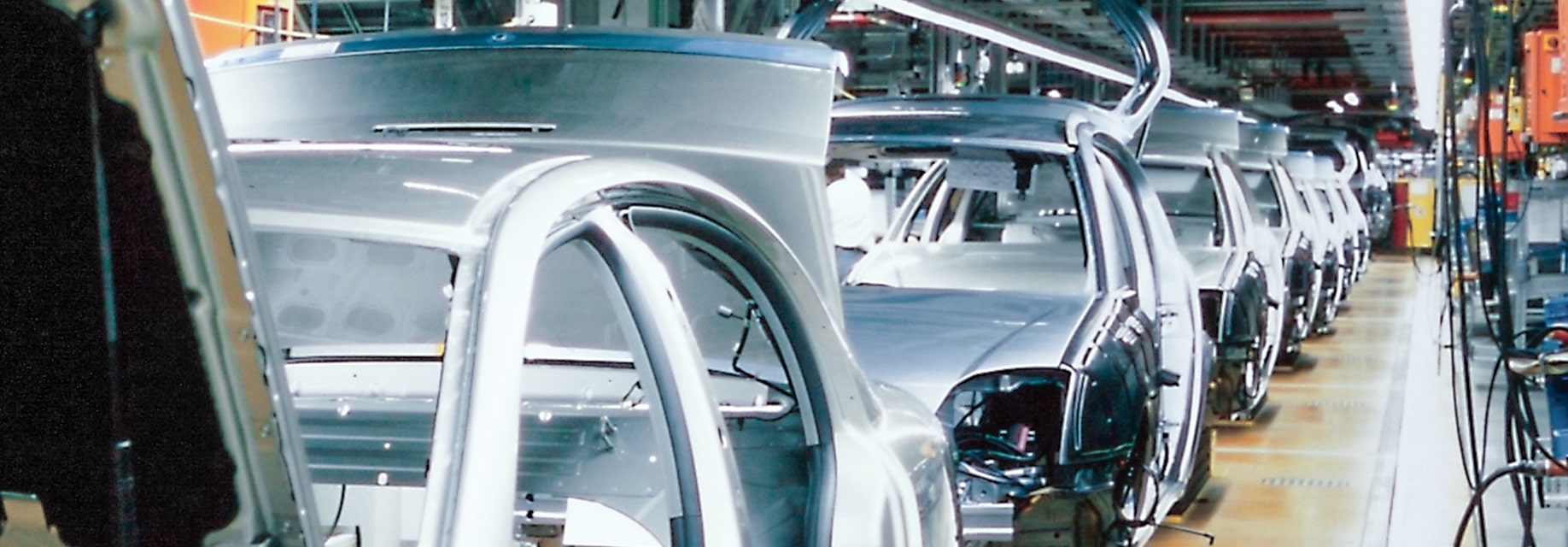
Feature: Environmentally friendly conversion coatings to replace zinc phosphate coatings
-
Reducing substances that place a
burden on the environmentHeavy metals, conversion sludge
-
Shorter process
Cost reduction, time reduction
-
Superior corrosion resistance
Long-term rust inhibition
Difference in coating properties
| Conventional zinc phosphate conversion process | Zirconium conversion treatment | |
|---|---|---|
| Coating appearance (SEM) |
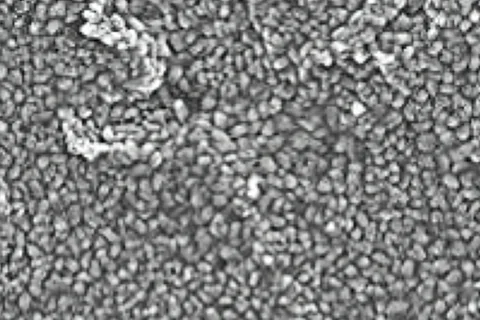
|
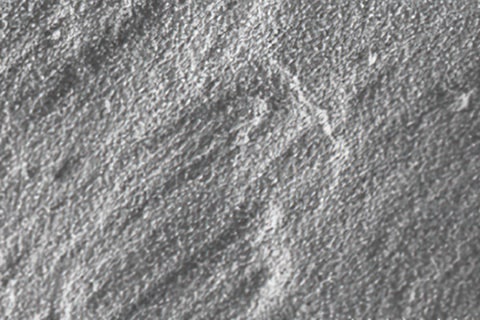
|
| Coating structure | Metal phosphate crystal coating | Amorphous metal oxide film |
| Adhesion | Anchor effect between the formed crystalline coating and the applied coating | Chemical bond with the applied coating resin due to the introduction of an adhesive functional film |
| Corrosion resistance | Alkaline buffer / self-repair | A fine structure with low porosity that is less prone to permeation by corrosive substances |
| Coating weight | 1.0-2.0g/m2 | 0.05-0.10g/m2 |
| Process before conversion | Activation process is required | Not required |
| Environmental burden | Phosphate, nickel, manganese | Nothing of note |
Differences in the treatment process
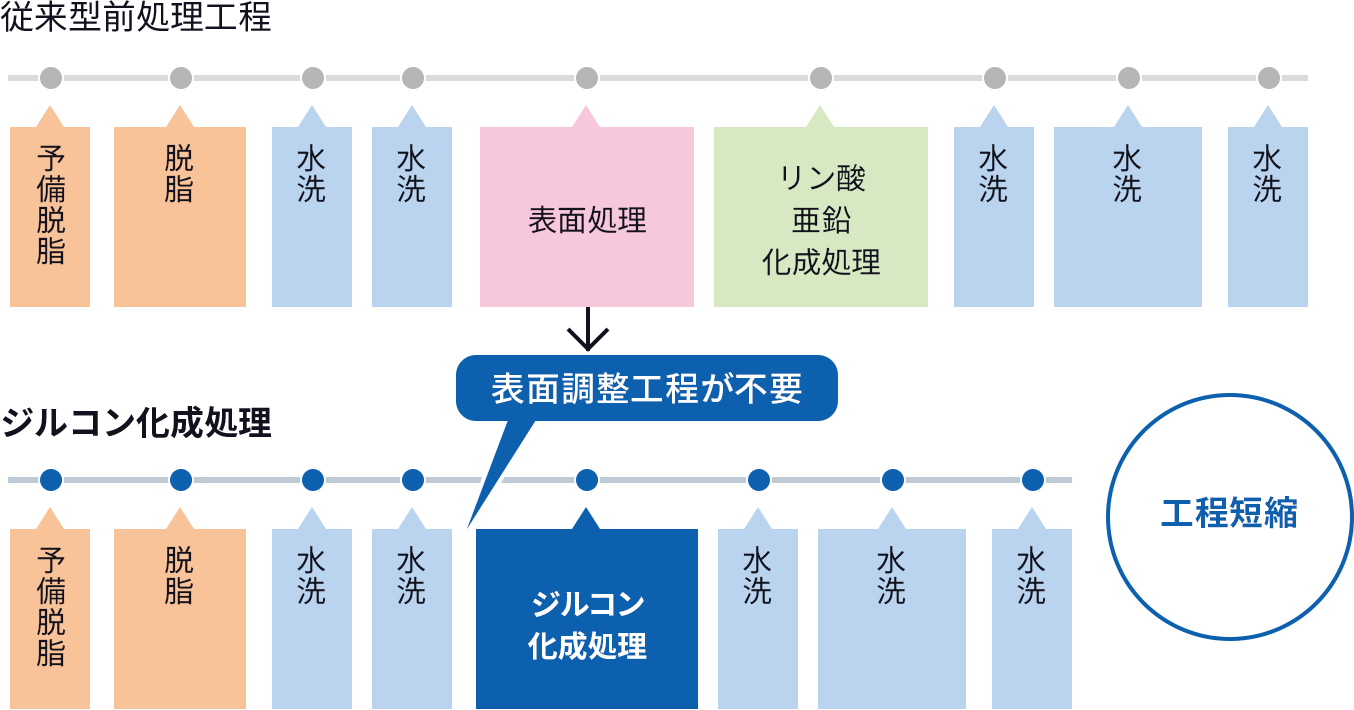
Products
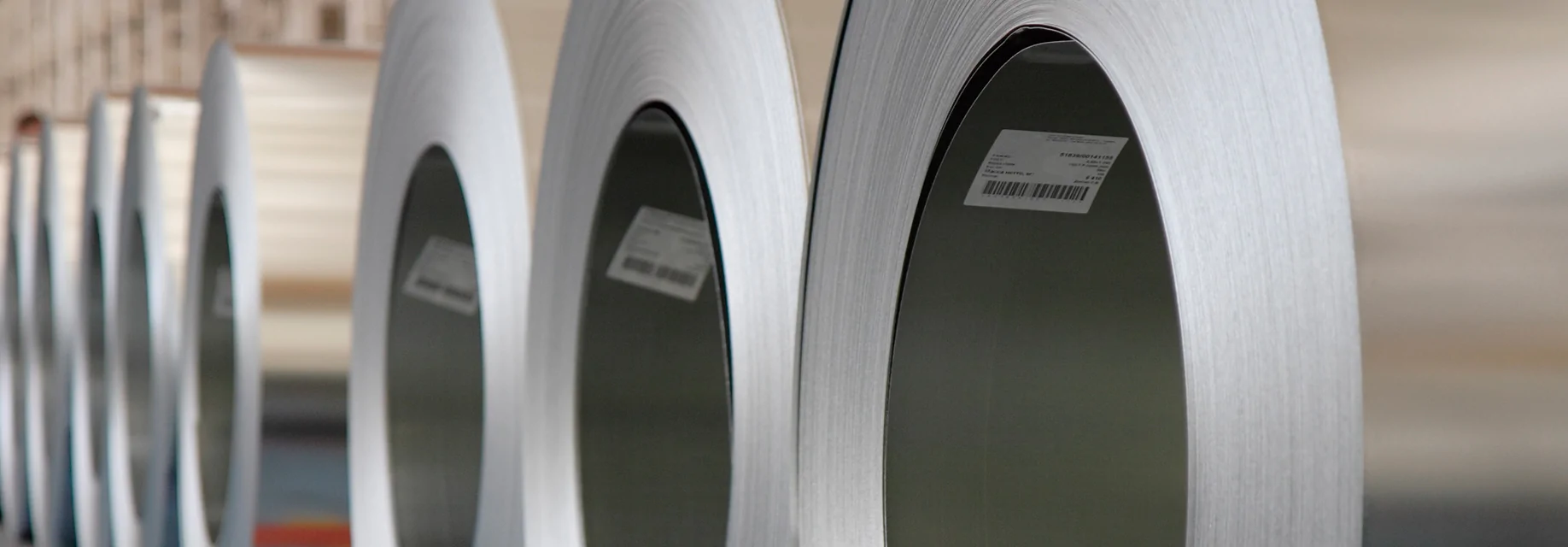
Function endowment by thin film
-
Adhesion
Improved adhesion between the steel plate and the applied coating
-
Corrosion resistance
Long-term rust inhibition of the steel plate in a corrosive environment
-
Weather resistance
Inhibition of coating degradation due to UV rays in outdoor use
-
Chemical resistance
Superior in acid and alkali resistance
-
Sliding
Inhibition of coating surface damage due to physical loads
Zinc plating and non-ferrous metallic coils
-
- Building uses
-

-
- Home appliance uses
-
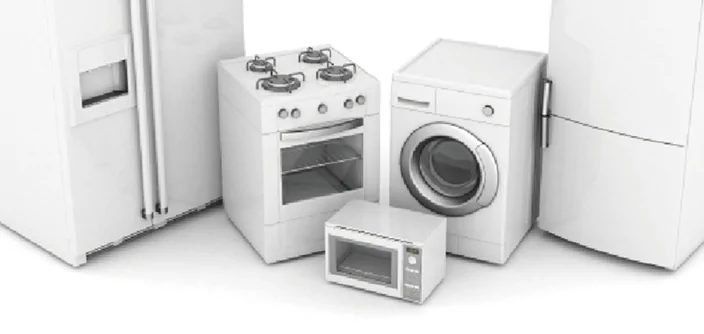
-
- Laminate uses
-

Function-endowing design technology
- Synthetic resin technology
- Inorganic component dispersion technology
- Organic/inorganic composite technology
- Treatment liquid stabilization technology
- Surface tension control technology
- Fast low-temperature film-forming technology
- Coating physical property control technology
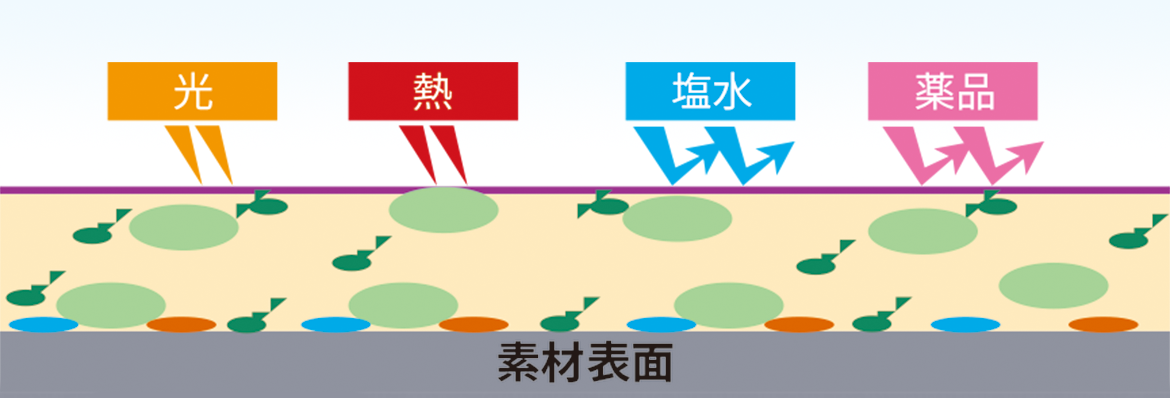
Products
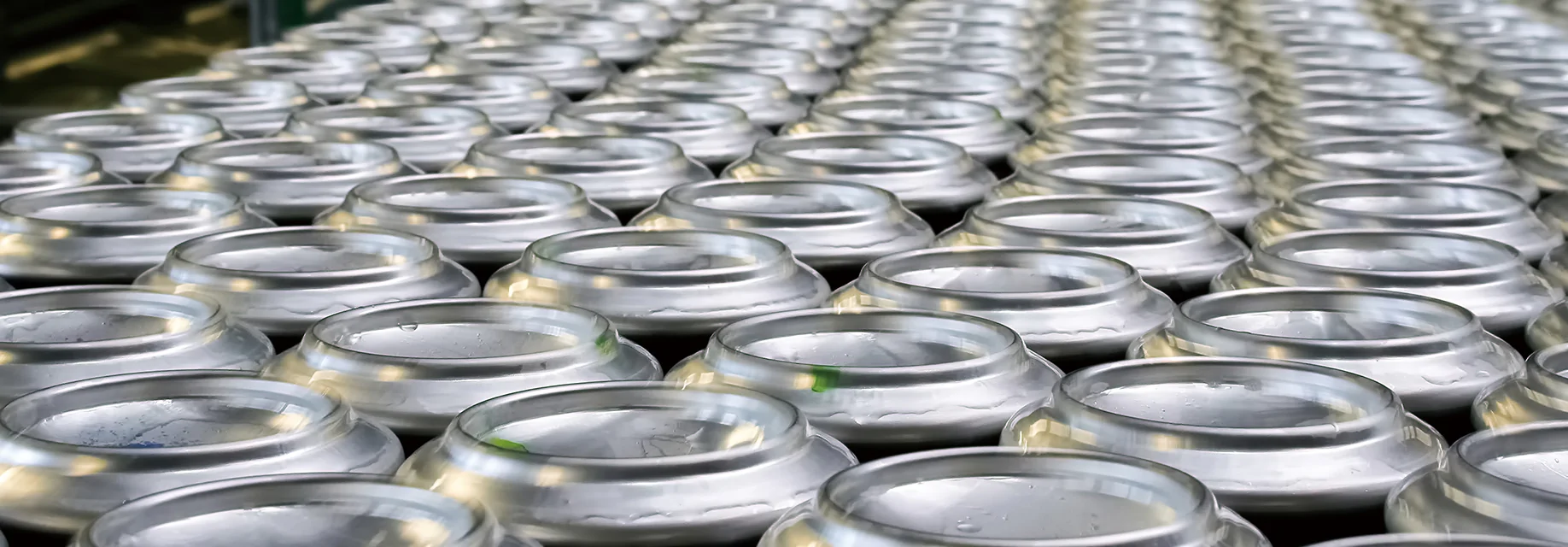
Treatments for aluminum beverage cans
Aluminum is very susceptible to oxidization. The following is required to use it as a container for beverages.
-
Removal of
oxidized layer (rust) -
Removal of grime deposited
during forming -
Prevention of reoxidation
after rinsing
Summary of the aluminum beverage can
treatment process
- Degrease
-
Conversion
Coatings -
Rinse and
drying
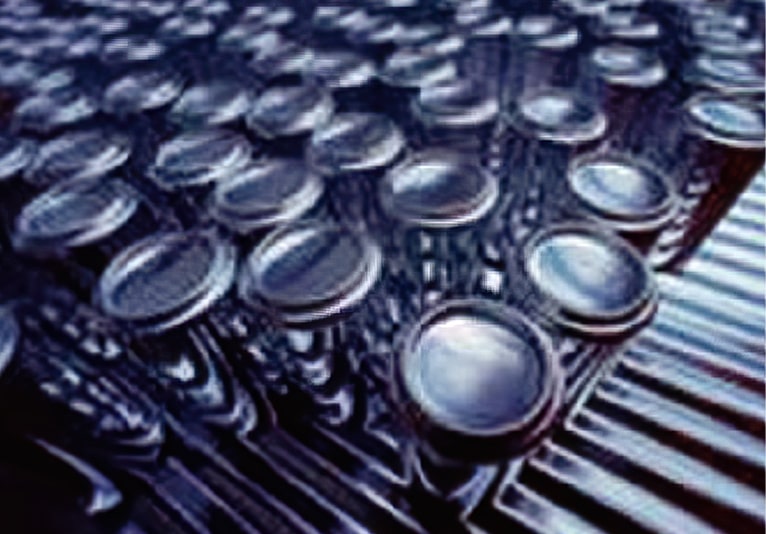
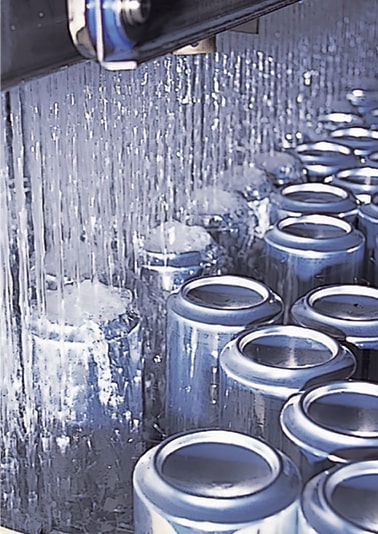
Functions of our chemicals
-
- Degreasing agents
-
The surfaces of aluminum cans after the forming process have deposits of rust and oil-based grime, and our products function to remove these.
-
- Conversion agents
-
Aluminum is a metal that is susceptible to corrosion. Our products function to form a metallic coating that endows the aluminum can surfaces with functions such as corrosion resistance and coating adhesion.
Products
Functional coatings
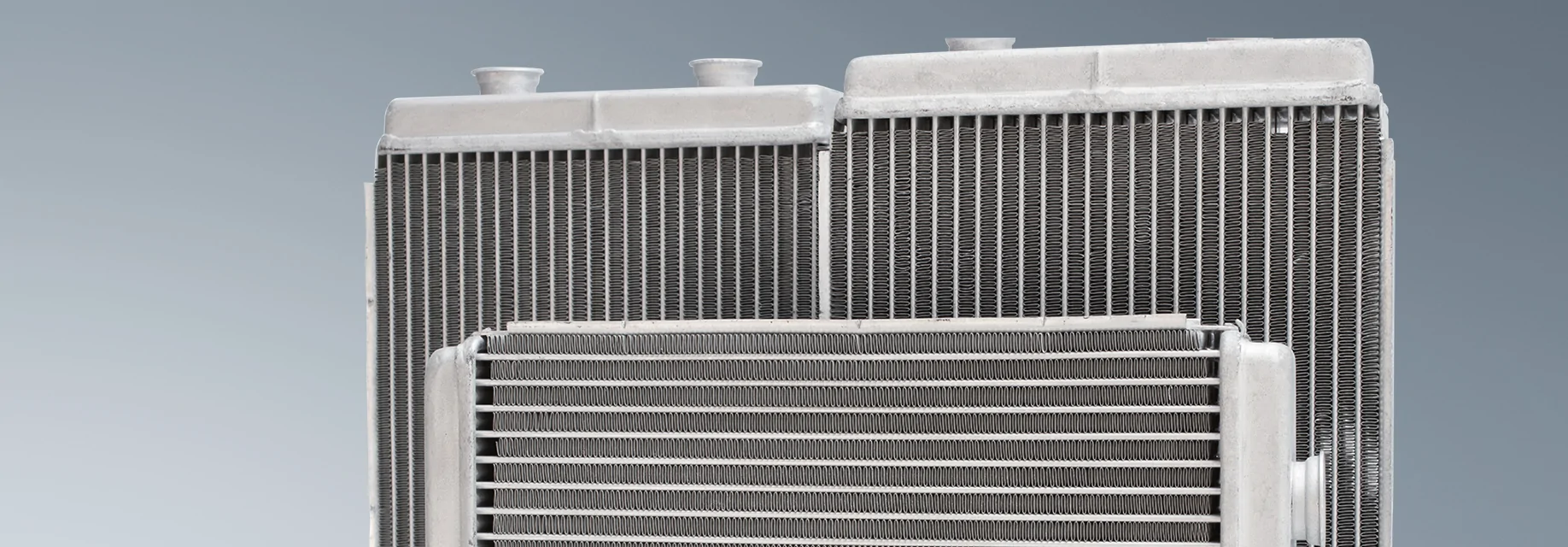
A hydrophilic treatment type suitable for the type of heat exchanger is available
- Automobile air conditioner
-
- Post-coating
-
Hydrophilic treatment of a completed
heat exchanger - Extra features
- Anti-odor
Comfortable even in the cabin, a compact space. - Room air conditioner
-
- Pre-coating
-
Hydrophilic treatment of aluminum plates
before making heat exchangers - Extra features
- Workability and soiling
Remains hydrophilic even when working fluid is deposited.
Condensation clogging is mitigated with our hydrophilic treatment
-
- Before
-
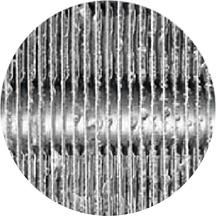 Endowed with our technology for water leakage
Endowed with our technology for water leakageCondensation clog formed
-
- After
-
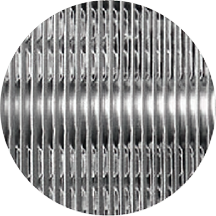 Heat ex-
Heat ex-
change rate
improvedCondensation clog unclogged
Prevent condensate that forms during
cooling from clogging the fins (condensation clogging)
on the heat exchanger and
decreasing cooling efficiency.
- Required performance
- Prevent condensation clogging between heat exchange fins
Heat exchange efficiency is improved and condensation clogging is mitigated.
Products
- Contact Us Contact us about Business Overview
